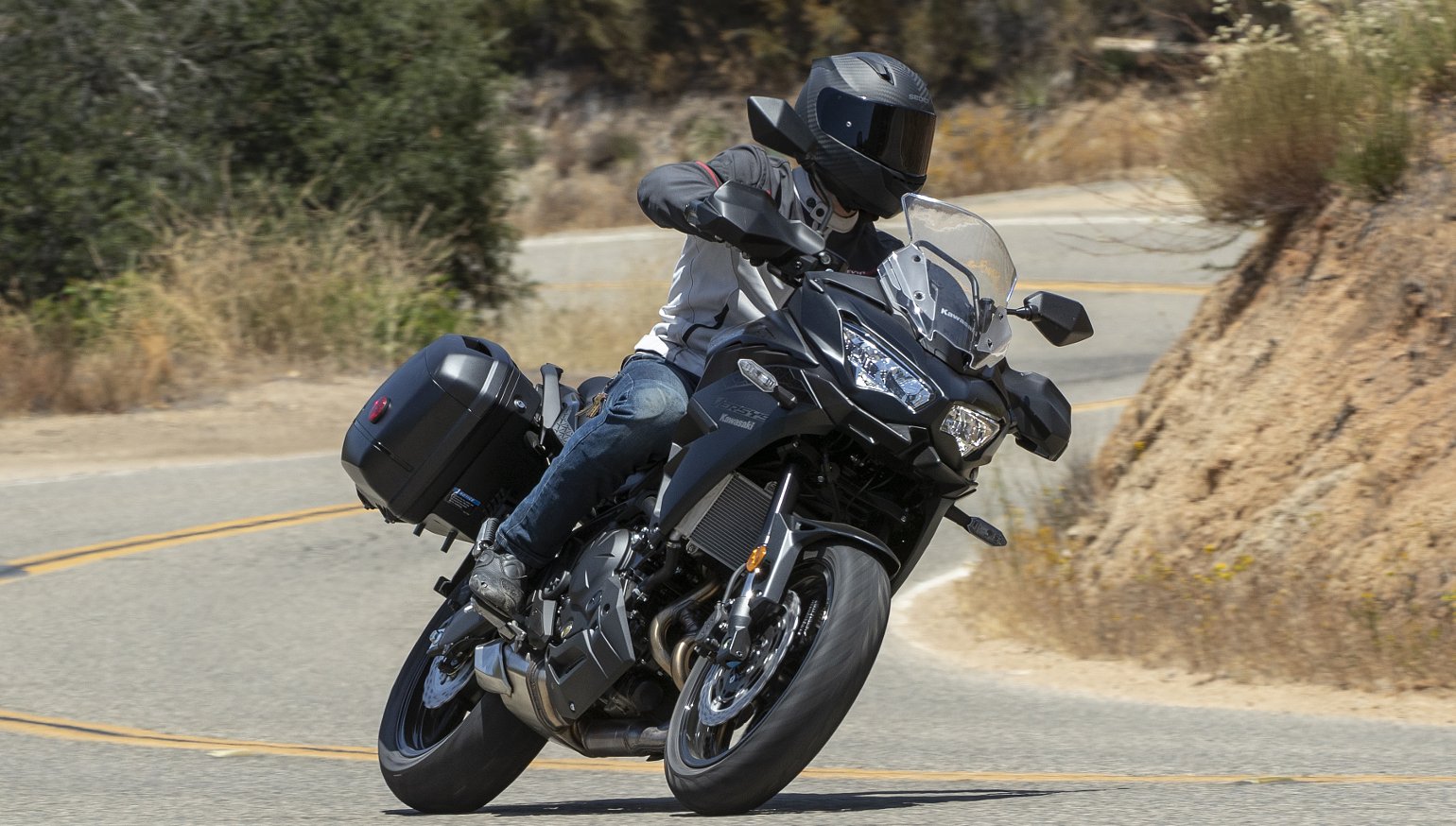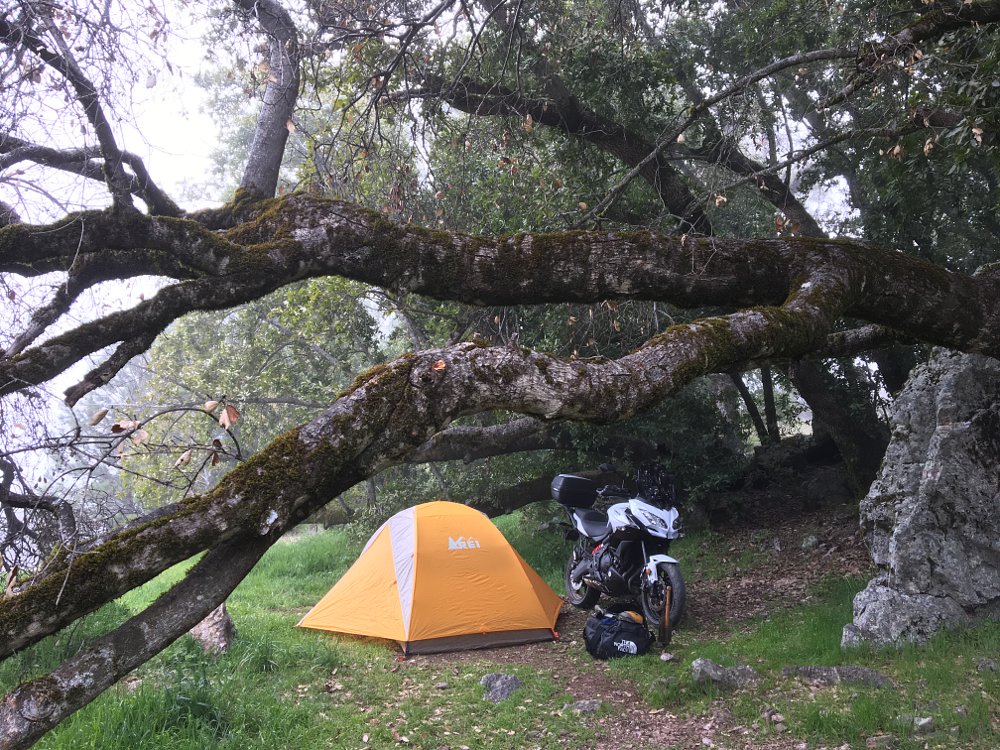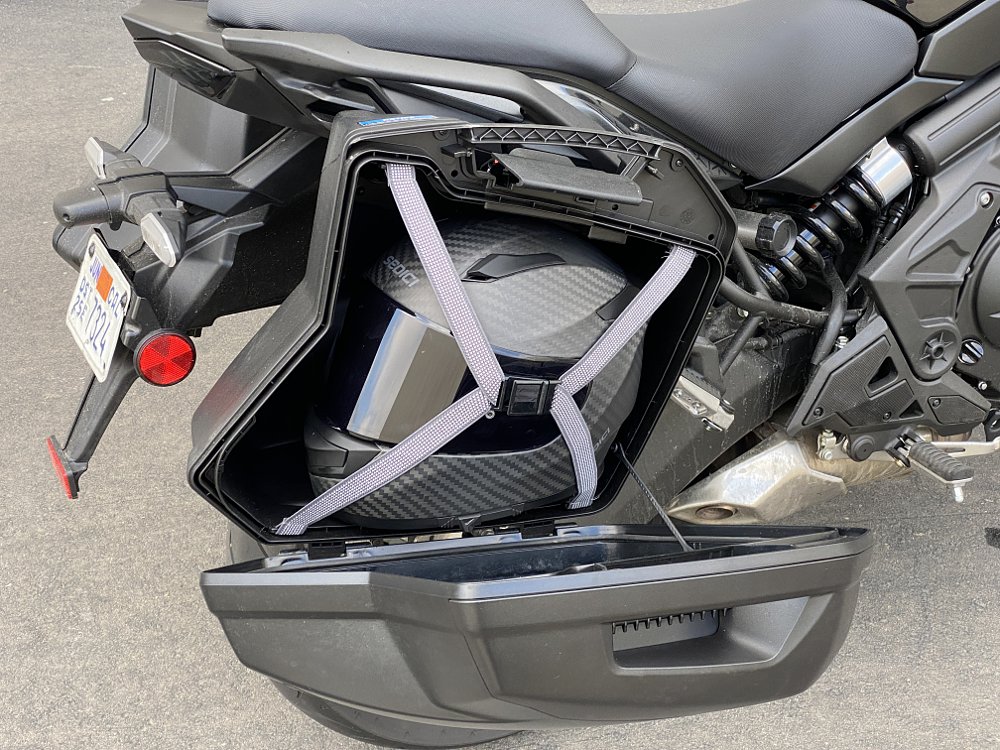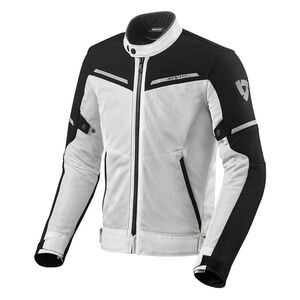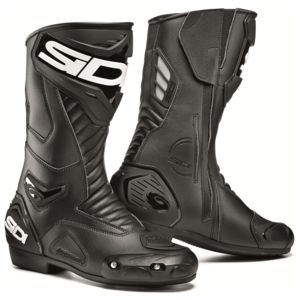For 14 years now, when anyone asks me what bike I’d own if I could only have one, I’ve had a reply at the ready: If someone else is buying, give me a BMW GS. If I’m spending my own money? I’ll take a Kawasaki Versys 650.
I had my first ride on a Versys 650 in 2008, and even as a rambunctious 20-something the practicality of the thing made huge sense to me. Its 649 cc parallel twin wasn’t hair raising, but it got the job done (and did great wheelies), and you just couldn’t argue with the bike’s Swiss Army knife versatility. It was a comfortable, capable, well featured bike that was more than the sum of its parts and willing to serve just about any function you had for it, from city commuting to back-road ripping to cross-country touring. On top of all that, the Versys was cheap to buy and good on gas, making it an amazing value.
The Versys went through several iterations over the years (see model history, below), and I continued to live it up in the moto industry, riding press bikes instead of actually owning anything street-legal myself. Then, in 2018, I left the magazine gig. I needed wheels, stat, so I put my money where I always said I would. I bought a Versys 650.
I’m not the only one. Common Tread’s own benevolent captain Lance Oliver is a former Versys owner, as is videographer extraordinaire Spenser Robert, plus Common Tread Journal’s managing editor Marc Cook. At the press event for this new 2022 Versys 650, there were two other journalists and several Kawasaki staff that were past or current Versys owners. Within a thin, sober slice of the motorcycling community, the Versys is a darling, a bike those of us in the know believe is the right choice for the realistic needs of most riders. And for 2022, Kawasaki is looking to retain that appeal with a handful of updates.
A look back at the Versys
Before we dive into the new bike, let’s explore the Versys timeline, because there doesn’t seem to be a concise model history anywhere on the internet. Plus, if you’re sensible enough to consider a Versys 650, then you’re probably also smart enough to consider buying a used one, so knowing how the generations shake out is useful.
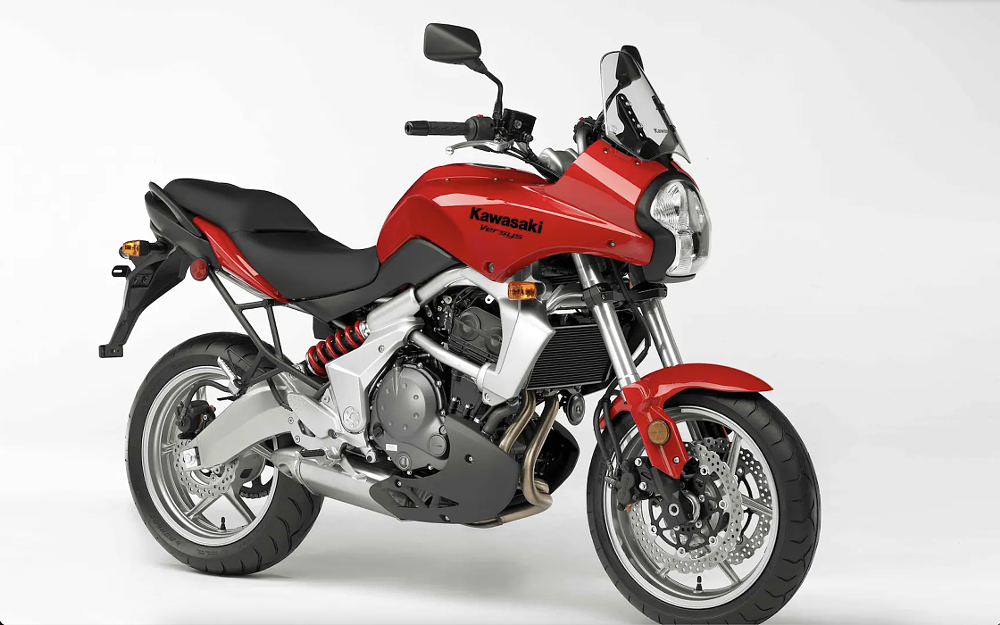
First-generation Versys 650, 2008-2009: Based on the Ninja 650R that Kawasaki introduced in 2006, the Versys 650 first appeared in Europe and Canada in 2007, then arrived in the United States in 2008 with a MSRP of just $6,899 (about $9,250 in today’s dollars). The Versys name is a mashup of “versatile” and “system,” a portmanteau that’s as dorky as it is accurate.
The Versys used the same frame as the Ninja, but with a 1.2-inch longer fork to help it handle rough roads, more upright ergonomics for increased rider comfort, and a larger five-gallon tank for extended range. The 180-degree P-twin engine got a lower compression ratio (10.8:1 versus 11.3:1) and different cams to shift power lower in the midrange, with the end result being approximately 65 horsepower and 40 foot-pounds of torque, metered out evenly across a wide rev range.
With its keyhole headlight, partial bodywork, tall stance, stepped saddle, side-mount shock, and under-engine exhaust, the Versys was an aesthetic anomaly. But it worked. The tractable engine, comfort, excellent range (200-plus miles), above-average brakes and suspension, sporty handling, touring capability, and bargain price made it a big hit among pragmatists and riders on a budget.
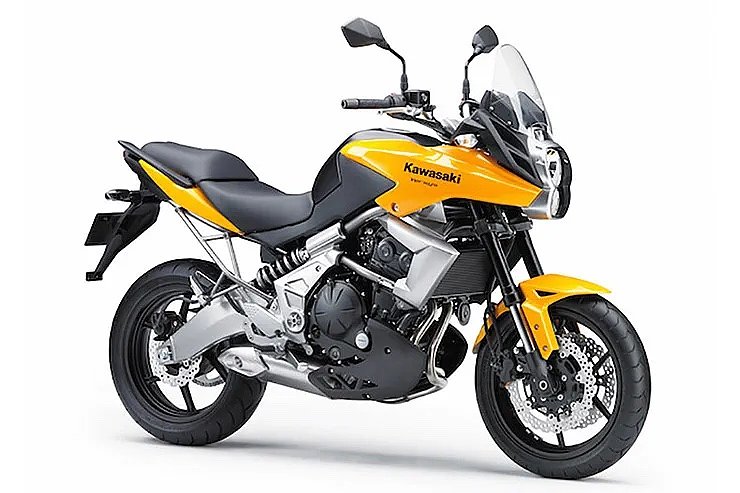
Second-generation Versys 650, 2010-2014: If the first gen’s style was an acquired taste, then the second gen’s look was properly polarizing. The salient feature of the 2010 update was a stacked “cyclops” headlight that makes this generation especially weird looking. Thankfully, you couldn’t see the headlight from the saddle and the Versys’s fundamental functionality remained intact, aided by rubber rear engine mounts and footpeg inserts to help quell vibrations. The price jumped up to $7,599, but it was still a lot of bang for the buck and the Versys trucked on as a quiet favorite.
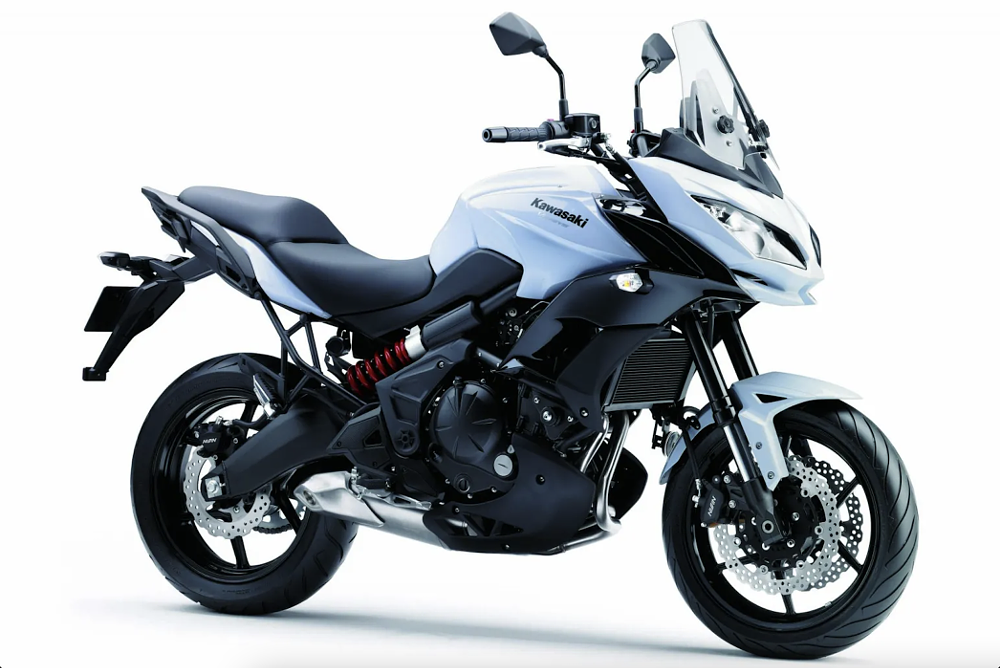
Third-generation Versys 650 and 650 LT, 2015-2021: For 2015, Kawasaki restyled the Versys to bring it out of the leper colony and into the ZX family of sport bikes. The new angular bodywork and twin, squinting headlights looked handsome, but that was just the tip of the iceberg of improvements. ABS came standard, and the bike got a larger 5.5-gallon tank (more range!), revised engine tuning said to unlock a little more torque, updated engine mounts and a rubber-mounted handlebar to further reduce vibrations, revised ergonomics that saw the footpegs moved down 0.6 inches and forward 0.8-inches, a taller windscreen, and a new dash.
Kawasaki also switched up the suspension, installing a Showa fork with adjustable spring preload in the left leg and adjustable rebound damping in the right. The laydown shock lost its adjustable rebound damping, but gained a remote hydraulic-preload knob, which was a worthwhile tradeoff given the bike’s aptitude for hauling a passenger and/or luggage. To boost cargo capacity, the subframe was beefed up, and featured larger grab handles with integrated tie-down hooks and threaded holes ready to accept a top-box rack of your choosing. Nissin two-piston calipers replaced the Tokicos for a slight improvement in already-good brake feel and power.
The $7,999 price was a negligible increase and spending just $700 more would get you the new LT model, which came equipped with truly excellent 28-liter hard cases (they’d hold a full-face helmet in each side and were keyed to the ignition) and aluminum-spined hand guards.
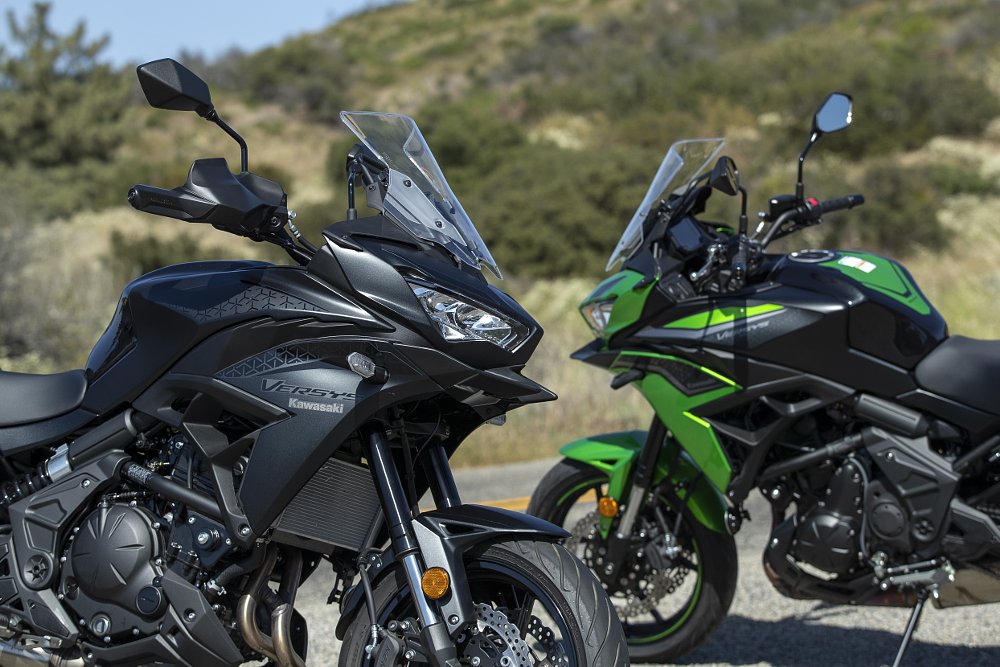
What’s new for ‘22
Seven years on, the Versys 650 is in its fourth generation, a makeover marked by a new look and a few other updates that help keep the model current. Electronics top the list, in the form of three-level KTRC traction control (Level 2, Level 1, and off), a new 4.3-inch TFT dash in place of the previous analog tachometer and LCD display, and LED headlights and turn signals to complement the existing LED taillight.
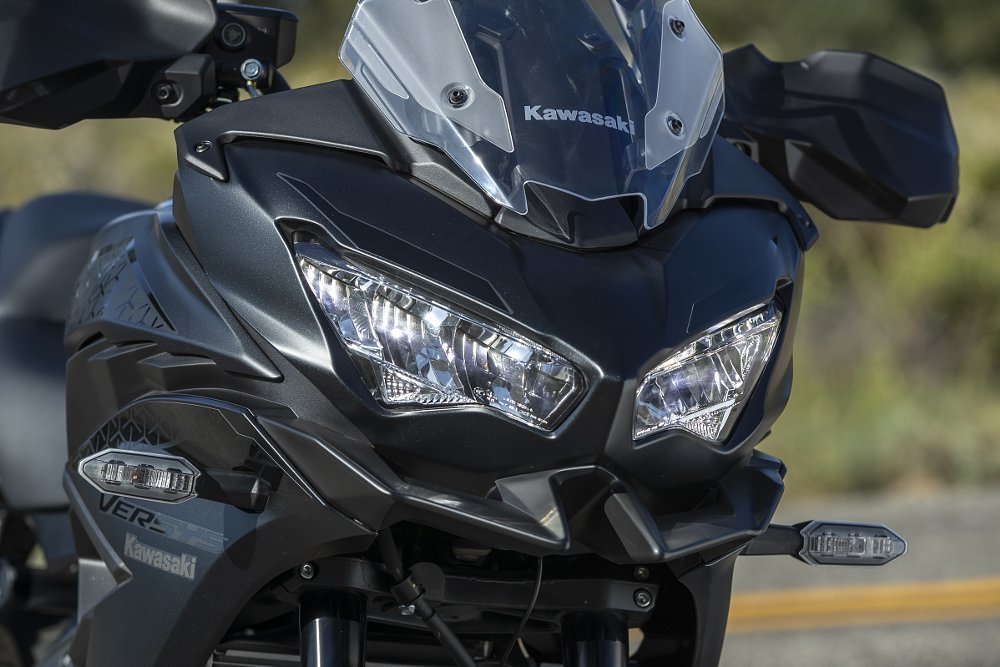
Those new headlights peer out from squintier slits in the upper fairing, above an overgrown mustache of a chin spoiler that’s supposed to work in conjunction with a layered upper fairing to offer cleaner aero.
The model’s windscreen-adjustment continues to evolve, from the bolts of the first bike to the threaded knobs of the third-gen bike, to a new single lever in the cockpit. You still have to use two hands to make an adjustment (one on the button, one to push or pull the screen), but it’s a whole lot quicker and easier than leaning over the front of the motorcycle.
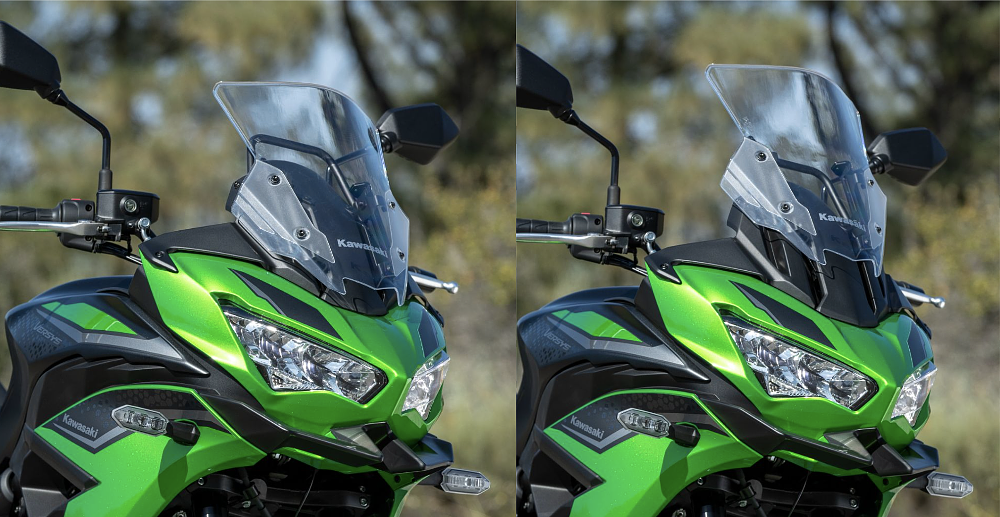
Other than that, the only real change is price. It’s swelled to $8,899 for the base bike in black, or $9,099 for the more eye-catching green. The LT model, which is only available in black and comes with all-plastic hand guards, the same awesome side cases we’ve always loved, and a 12-months-longer 24-month warranty, rings in at $9,999. You could build your own green LT for essentially the same price (the bag mounts are integrated into the grab handle and passenger-footpeg brackets, and it’s $800 for the bags and $189 for the hand guards), but extending the warranty another 12 months costs close to $500.
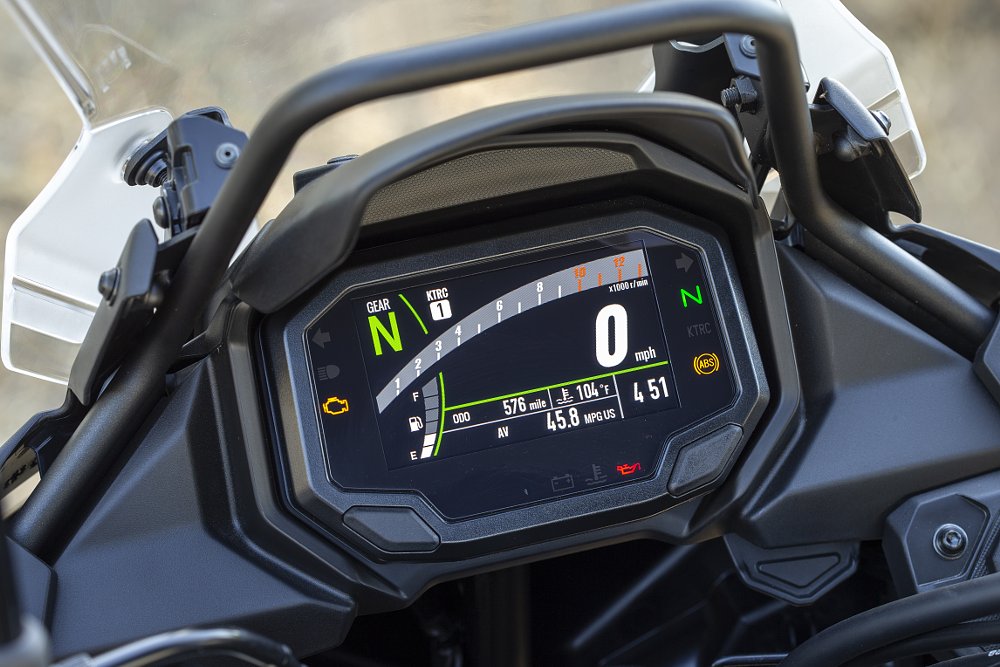
What I don’t see on the 2022 bike that leaves it lagging behind the times is cruise control, and we’re still waiting on a center stand that will work with the under-engine exhaust. The other thing that Versys fans have been waiting for is a weight reduction. The LT we tested tips in at 500 pounds with a full tank. Meanwhile, the Z650 and Ninja 650 underwent an overhaul in 2017 that cut over 40 pounds from their curb weights. Why doesn’t the Versys 650 get the same treatment? When I asked Kawasaki personnel about it, they suggested that the bike’s potential use as a two-up tourer precludes the application of the lighter (read: weaker) frame and five-spoke wheels used to slim down the Z650 and Ninja 650. Dang. Good thing the Versys carries its weight so well.
That same great vanilla flavor
As a Versys 650 owner, throttling around on the new bike is a familiar experience, though being 25,000 miles fresher makes the press bike feel especially taut and smooth. The rider arrangement is the same as always, with a relatively wide ⅞-inch steel handlebar placing the grips in a relaxed position, footpegs comfortably distant, seat suitably soft and well shaped. I know from experience that the saddle can introduce pressure points toward the end of a 500-mile day, but what seat doesn’t?
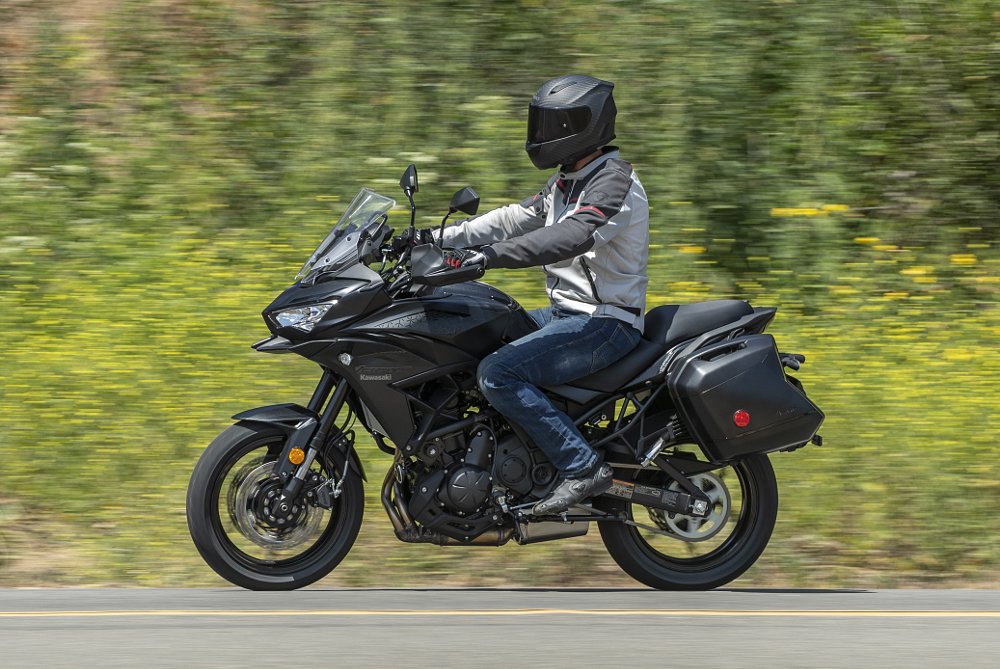
Kawasaki suggested that the 2022 bike has better wind protection, but it’s hard to tell. What I can say is that my shoulders felt fully exposed to the breeze and adjusting the screen height made very little difference in how much wind reached my helmet and chest. The 80 mm of range that the bracket offers will likely be more useful with a larger touring screen. I swap the stock screen out for a taller one in winter, and it looks like that can still be done easily.
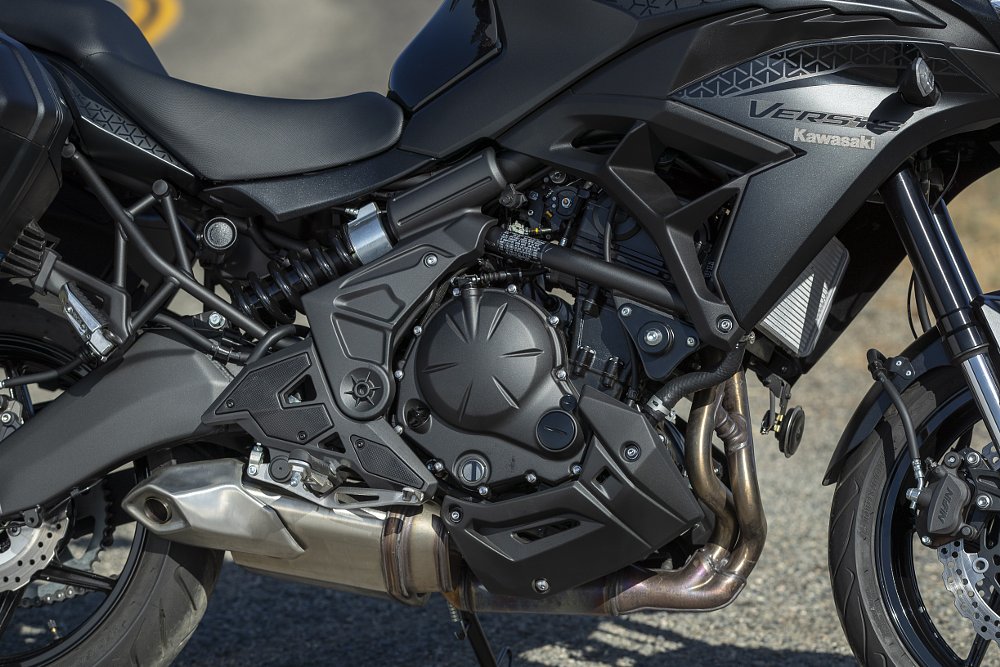
One of the biggest gripes people have had about the Versys is its ho-hum parallel-twin engine. The popularity of characterful 270-degree parallel twins as used in the Yamaha MT-07, Honda Africa Twin, and Aprilia RS660 have really shone a light on how boring and nasally the Kawasaki’s 180-degree twin is. Personality aside, it’s a perfectly good engine with great midrange and a decent little rush of power above 8,000 rpm. Is it fast? Not really, but it’s certainly quick enough to be fun on a twisty road, strong enough to hoist a second-gear wheelie (if you’ve remembered to turn off KTRC), and smooth enough to cruise 80 mph (with 6,000 rpm indicated, in sixth) on the highway. And it’ll net you 45 mpg while doing it.
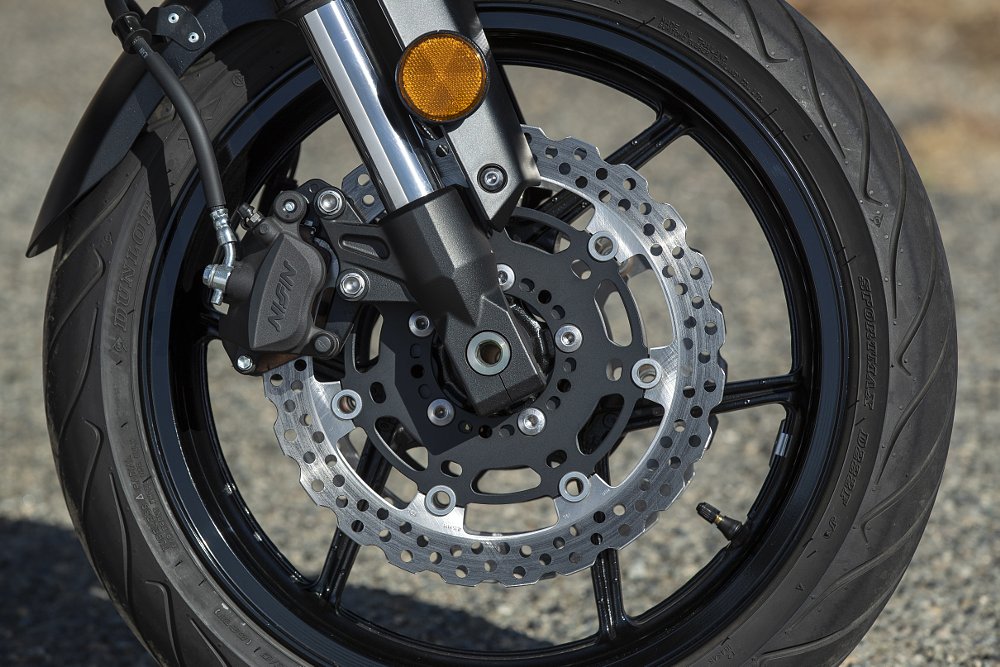
The engine’s only real, functional drawback is somewhat sudden power pickup off of closed throttle. As it’s been explained to me (by friends at FlashTune, where they study the ones and zeros that make ECUs work), the abruptness that plagues some modern EFI bikes is the result of zero “trailing fuel,” which is to say when the throttle is closed, fuel flow ceases completely. Gracefully reintroducing gasoline to the combustion chamber is a delicate process that Kawasaki in particular has struggled to master.
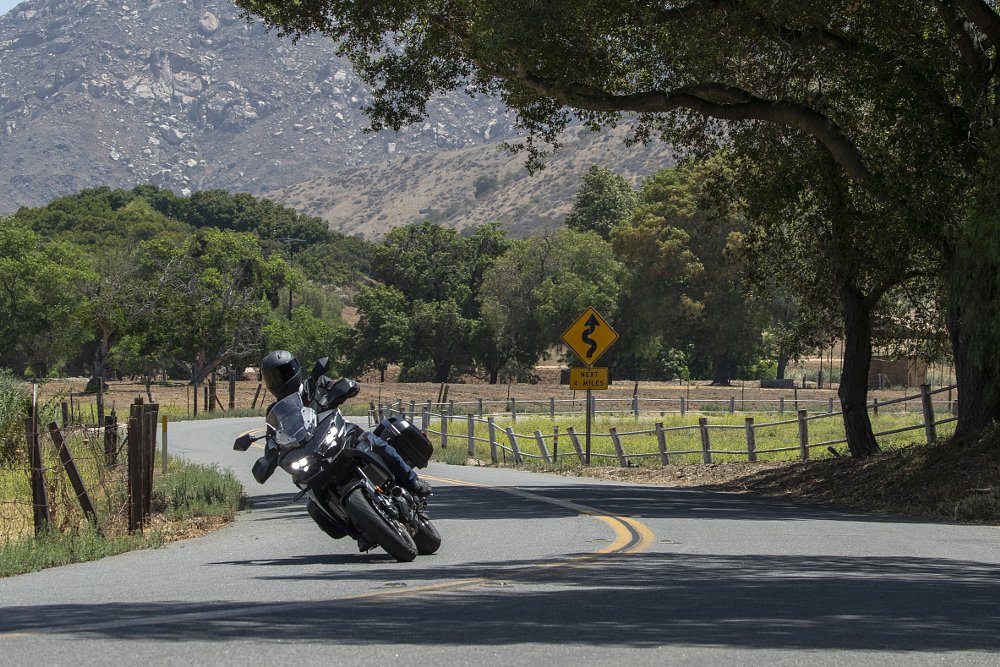
Narrow-tired bikes usually change direction well, and the Versys is no different. Handling has always been one of the Versys’s strengths, in part because the suspension is sufficiently sprung and damped for quasi-aggressive riding. If you add a turn or two of rebound damping to the right fork leg (there’s crossover to the compression circuit, so it slows the fork down in both directions), you can slay a twisty road without even scooting a butt cheek off the seat. The only time I’ve ever dragged the pegs on my Versys was at the track, which has tempted me to install a set of footpeg-lowering links to improve touring comfort. I’ve never gotten around to it though.
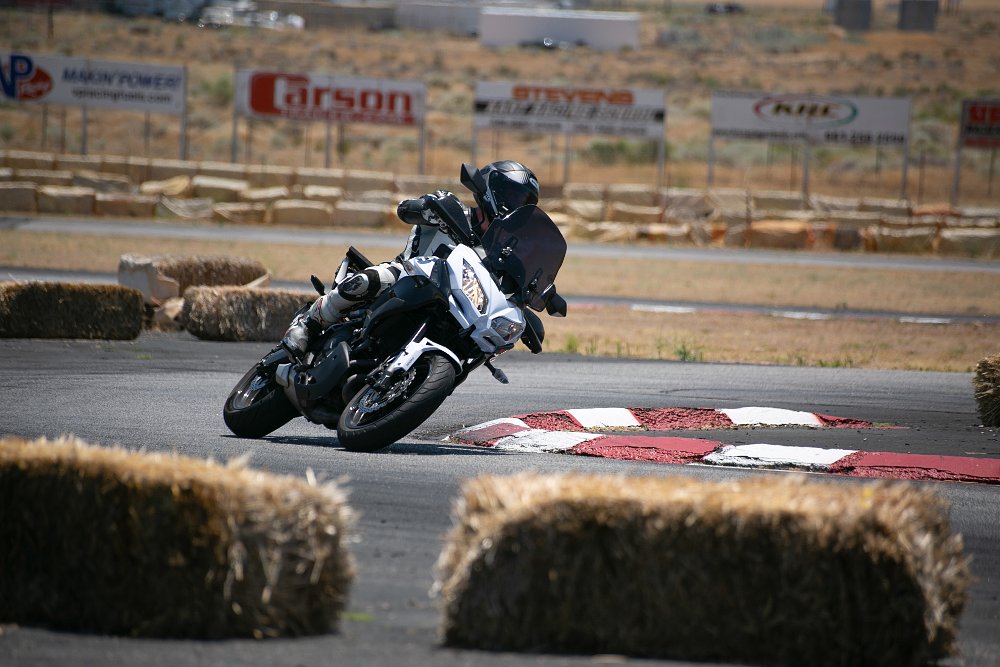
KTRC is nice, but not really useful unless traction is limited. We got some rain while I had the Versys, so I tested Level 1 and Level 2 to see how they responded. Level 1 allows a bit of slip before the computer kicks in, while Level 2 is slanted toward safety and steps in immediately. I’ve always appreciated the leniency of the 650’s ABS system — you can trail brake pretty hard without getting interrupted — and the 2022 bike is just as permissive.
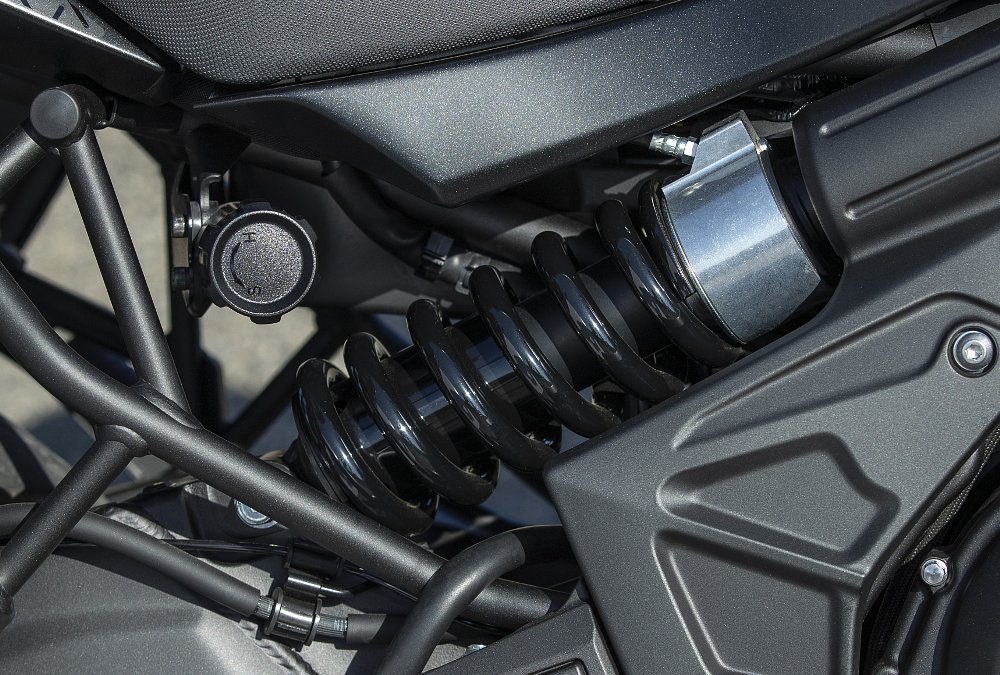
If ABS gives you a long leash, the gas gauge tries to keep you reeled in. It was and continues to be pessimistic, dropping to half by the time you’ve burned two gallons and threatening empty even when you have 75 miles or range remaining. There is an estimated range readout on the dash, but I’ve never found it reliable. When renters take my 2015 LT on tour, I tell them to rely on the trip meter and to expect 250 miles of range out of a tank.
In a nutshell, the new Verys is more or less the same skilled all-arounder it’s always been, with a lot of clear benefits and a few easily overlooked shortcomings. The fact that the bike hasn’t required a major mechanical overhaul to remain relevant is a testament to the platform’s intrinsic goodness.
Fourteen years on, the Versys still delivers, and it’s still my answer to the question of “if you could only have one bike…”
| 2022 Kawasaki Versys 650 | |
|---|---|
| Price (MSRP) | $8,899 (base, black), $9,099 (green), $9,999 (black LT model) |
| Engine | 649 cc, liquid-cooled, four-valve, parallel twin |
|
Transmission, final drive |
Six-speed, chain |
| Claimed horsepower | NA |
| Claimed torque | NA |
| Frame | Steel-tube perimeter |
| Front suspension | Showa 42 mm fork adjustable for spring preload and rebound damping; 5.9 inches of travel |
| Rear suspension | Showa shock adjustable for spring preload; 5.7 inches of travel |
| Front brake | Dual Nissin two-piston calipers, 300 mm discs with ABS |
| Rear brake | Nissin single-piston caliper, 250 mm disc with ABS |
| Rake, trail | 25.0 degrees, 4.3 inches |
| Wheelbase | 55.7 inches |
| Seat height | 33.1 inches |
| Fuel capacity | 5.5 gallons |
| Tires | Dunlop Sportmax D222, 120/70R17 front, 160/60R17 rear |
| Measured weight | 500 pounds |
| Available | Now |
| Warranty | 12 months, 24 months for LT model |
| More info | www.Kawasaki.com |




